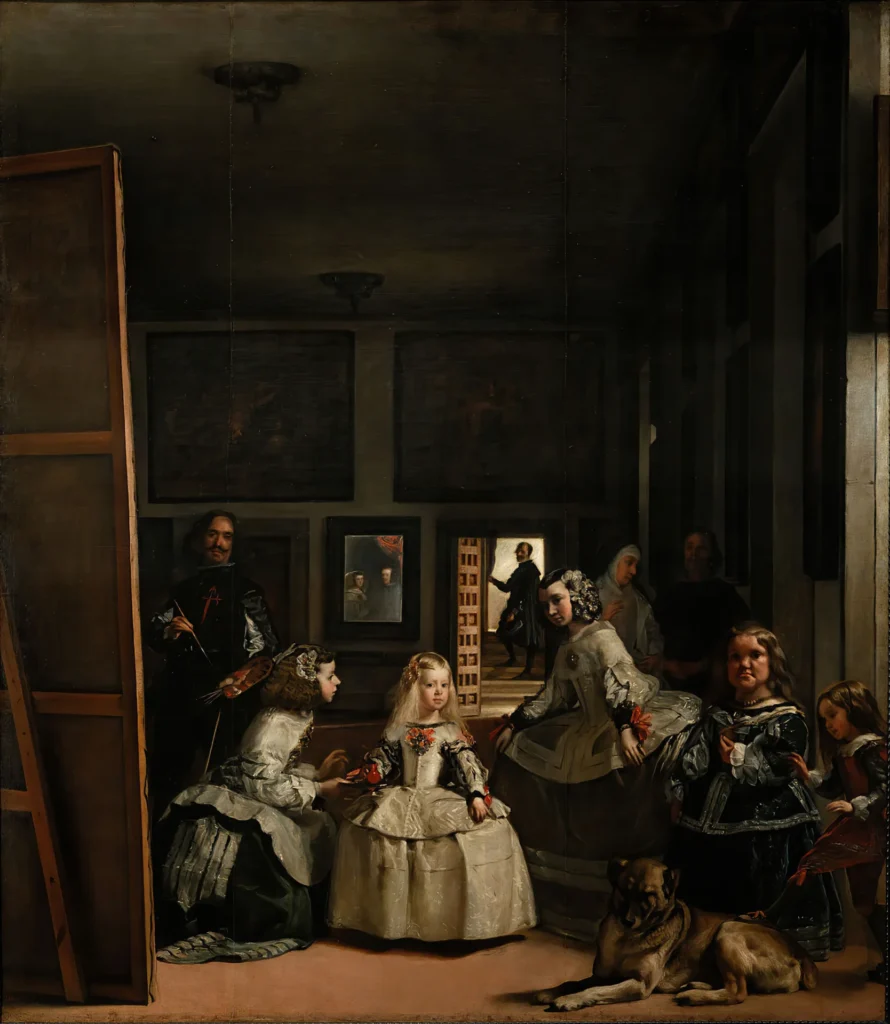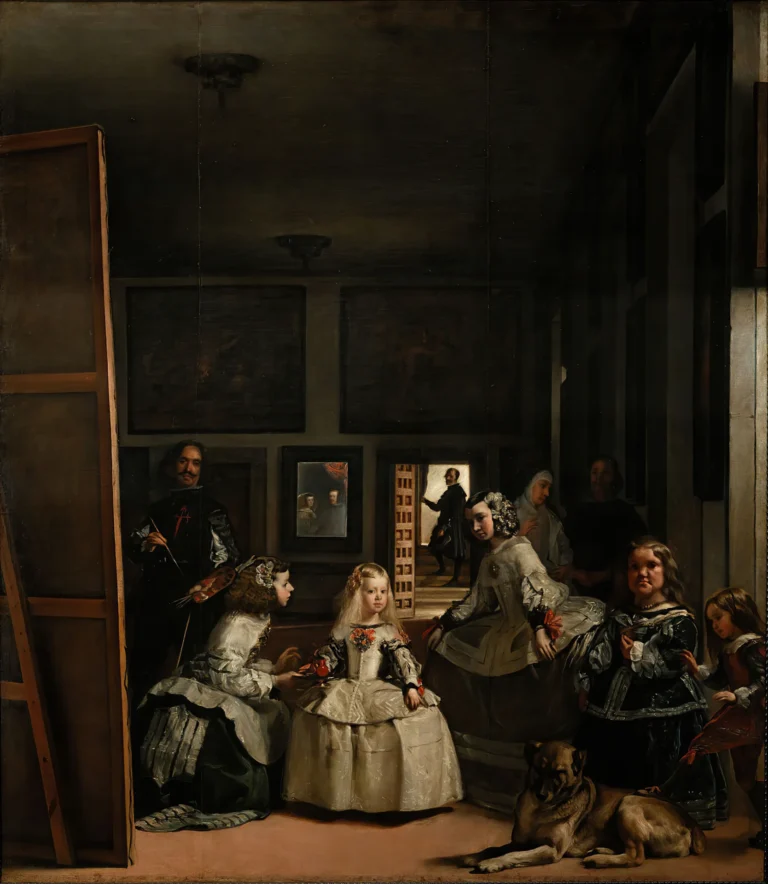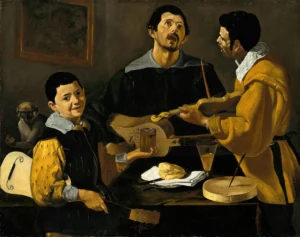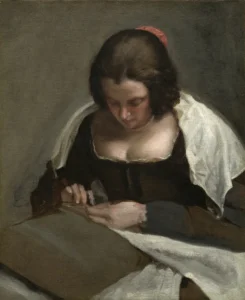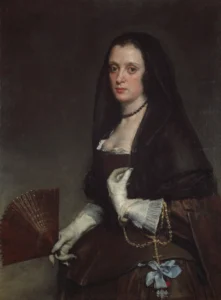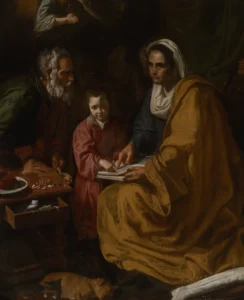Las meninas (1656)
Diego Velázquez's Las meninas is a monumental 1656 painting that uniquely portrays Princess Margaret Theresa alongside her attendants in a highly innovative composition. Found in the Museo del Prado, this masterpiece captures a moment of intimate observation between the royal family and the artist himself. It's celebrated not only for its technical excellence, including chiaroscuro and a sophisticated use of perspective but also for the complex layers of meaning it conveys, prompting ongoing discourse among art historians.
Year 1656
About the Artwork
Did You Know
Liked what you see? Add it to your collection.
Enjoyed reading? Share it.
... continued
Artist and Context
Las meninas was painted by Diego Velázquez, the leading artist of the Spanish Baroque, who served as the court painter to King Philip IV of Spain. The painting is housed in the Museo del Prado in Madrid.
Title and Meaning
The title Las meninas translates to "The Ladies-in-Waiting" in Spanish, referring to the attendants of Infanta Margaret Theresa, the daughter of King Philip IV and Queen Mariana of Austria.
Composition and Style
The painting is renowned for its innovative and intricate composition. It features a high-ceilinged room in the Alcázar palace, presented as a simple box divided into a perspective grid. The scene includes several layers of depth, with seven distinct layers of space, and is illuminated by light streaming from an unseen source, creating deep shadows characteristic of the Baroque style.
Figures and Symbolism
Infanta Margaret Theresa: The central figure, a five-year-old princess, is surrounded by her attendants, including two ladies-in-waiting (Doña Isabel de Velasco and Doña María Agustina Sarmiento de Sotomayor), two court dwarfs, and a dog.
Velázquez: The artist himself appears on the left side of the canvas, standing before a large easel. The precise nature of the work on the easel is indiscernible, adding to the painting's enigma.
King and Queen: A mirror on the rear wall reflects the upper bodies of the king and queen, suggesting they might be the subjects being painted or observers of the scene.
Perspective and Illusion
The painting is famous for its play on perspective and illusion. The mirror reflection of the king and queen creates a sense of depth and raises questions about reality and illusion. The composition is designed so that the viewer's perspective is approximately that of the royal couple, although this has been a subject of debate among art historians.
Technical Virtuosity
Las meninas is celebrated for its technical virtuosity, including the use of chiaroscuro, a limited and somber palette, and remarkably loose, free brushstrokes. The painting's realism is achieved despite the abstract and unrestrained nature of the brushwork.
Interpretation
The painting is full of secrets and layers of meaning, making it a subject of extensive analysis. It can be seen as an illusion picture, a mirror picture, and even an autobiography of the artist. The blurred faces of the king and queen in the mirror reflection may symbolize that even monarchs have no power over the artist's work.




